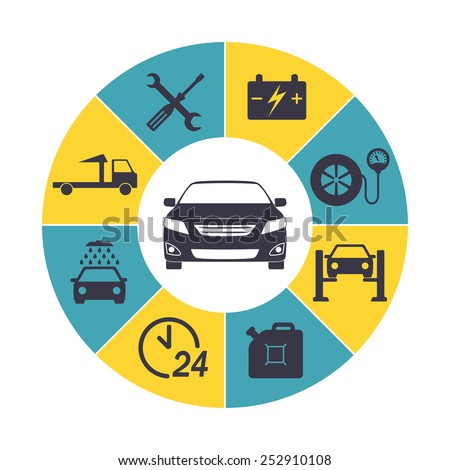Understanding The Importance Of Your Cars And Truck'S Warning Signals: What They Really Represent
Understanding The Importance Of Your Cars And Truck'S Warning Signals: What They Really Represent
Blog Article
Material Written By-Boye Forbes
When you're behind the wheel, those radiant caution lights on your dashboard can be a bit difficult. Do you recognize what they're trying to inform you concerning your car's health and wellness? Recognizing the importance of these lights is crucial for your security and the longevity of your vehicle. So, the next time among those lights turns up, would not you want to decipher its message precisely and take the required actions to resolve it?
Common Caution Lights and Interpretations
Identify common caution lights in your vehicle and understand their definitions to guarantee safe driving.
The most normal warning lights consist of the check engine light, which signals issues with the engine or emissions system. If this light comes on, it's critical to have your vehicle examined promptly.
The oil pressure advising light suggests low oil stress, needing instant focus to avoid engine damage.
A blinking battery light could suggest a defective billing system, possibly leaving you stranded otherwise resolved.
The tire pressure monitoring system (TPMS) light notifies you to reduced tire stress, affecting vehicle stability and gas performance. Neglecting this could cause risky driving problems.
The abdominal muscle light indicates a problem with the anti-lock stopping system, compromising your capacity to stop swiftly in emergencies.
Lastly, the coolant temperature level warning light warns of engine overheating, which can cause extreme damage otherwise settled swiftly.
Recognizing these usual warning lights will aid you attend to concerns without delay and keep secure driving problems.
Relevance of Prompt Attention
Recognizing the typical caution lights in your car is only the first step; the relevance of without delay addressing these warnings can't be stressed sufficient to ensure your safety when traveling.
When a caution light brightens on your dashboard, it's your vehicle's way of connecting a prospective concern that requires attention. Neglecting these warnings can result in a lot more extreme problems later on, compromising your safety and security and potentially costing you much more out of commission.
Trigger interest to warning lights can protect against break downs and accidents. For example, a flashing check engine light might suggest a misfire that, if left unattended, could trigger damages to the catalytic converter. Addressing this quickly can conserve you from a costly repair work.
In a similar way, a brake system advising light may indicate low brake liquid or used brake pads, essential elements for your security when driving.
DIY Troubleshooting Tips
If you see a warning light on your dashboard, there are a couple of DIY fixing tips you can try prior to seeking specialist assistance.
The initial step is to consult your car's manual to recognize what the particular warning light shows. Often the concern can be as straightforward as a loose gas cap setting off the check engine light. Tightening the gas cap might settle the trouble.
One more common problem is a low battery, which can set off numerous cautioning lights. Checking the battery connections for corrosion and guaranteeing they're protected could fix the trouble.
If a warning light lingers, you can attempt resetting it by detaching the auto's battery for a few minutes and then reconnecting it. Additionally, inspecting your automobile's liquid levels, such as oil, coolant, and brake fluid, can help fix cautioning lights associated with these systems.
Conclusion
To conclude, understanding your auto's warning lights is important for keeping your automobile running efficiently and securely. By promptly dealing with these alerts and understanding what they suggest, you can avoid pricey fixings and prospective break downs.
Remember to consult Highly recommended Online site for particular details on each advising light and act appropriately to make sure a hassle-free driving experience.
Keep informed, remain secure when traveling!
